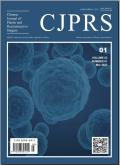Novel therapeutic approaches with poly-L-lactic acid for treating gluteal skin laxity in male patients
Chinese Journal of Plastic and Reconstructive Surgery
Pub Date : 2025-03-01
DOI:10.1016/j.cjprs.2024.11.006
引用次数: 0
Abstract
Poly-L-lactic acid (PLLA) has become a popular treatment for body skin laxity, especially in female patients; however, research on its use in male patients remains limited, particularly in addressing changes in the gluteal region due to aging. This case report investigates the efficacy of PLLA in treating skin laxity in the gluteal area of three male patients aged 36, 41, and 50 years who were treated at the Antony Barbosa Institute between May 2023 and June 2024. The Male Gluteal Contour Method™: C-Tech Collagen Boost was employed using a C-shaped injection technique with an 18G × 70 mm cannula. Patients underwent four sessions of PLLA injections, reconstituted with bacteriostatic sterile water and lidocaine, at 4–6-week intervals. Improvements in the gluteal contour and skin laxity were noted in all patients, with increased collagen production contributing to enhanced muscle definition and firmness. Minimal side effects such as mild bruising, swelling, and tenderness were reported, and no nodules were observed. This study highlights the importance of tailored treatment plans that cater to the specific needs of middle-age and older men. The C-shaped injection technique allowed for an even distribution of the biostimulator while respecting male anatomy. PLLA is a promising nonsurgical solution for improving male gluteal contour and skin quality, although further research with larger groups is warranted to establish more definitive guidelines for its use in male gluteal augmentation.
聚l -乳酸治疗男性臀肌皮肤松弛的新方法
聚l -乳酸(PLLA)已成为一种流行的治疗身体皮肤松弛,特别是在女性患者;然而,对其在男性患者中的应用的研究仍然有限,特别是在解决臀区因衰老而引起的变化方面。本病例报告探讨PLLA治疗臀区皮肤松弛的疗效,患者年龄分别为36岁、41岁和50岁,于2023年5月至2024年6月在Antony Barbosa研究所接受治疗。男性臀肌轮廓法™:C-Tech胶原蛋白增强采用c形注射技术,采用18G × 70 mm套管。患者接受4次PLLA注射,每隔4 - 6周用抑菌无菌水和利多卡因重建一次。所有患者的臀部轮廓和皮肤松弛度均有改善,胶原蛋白的增加有助于增强肌肉的轮廓和紧致度。轻微的副作用,如轻度挫伤,肿胀和压痛被报道,没有观察到结节。这项研究强调了量身定制的治疗计划的重要性,以满足中年和老年男性的特殊需求。c形注射技术允许生物刺激器均匀分布,同时尊重男性解剖。PLLA是一种很有前途的非手术解决方案,可以改善男性臀部轮廓和皮肤质量,尽管进一步的研究需要更大的群体来建立更明确的指导方针,以确定其在男性臀部隆胸中的应用。
本文章由计算机程序翻译,如有差异,请以英文原文为准。
求助全文
约1分钟内获得全文
求助全文
来源期刊

Chinese Journal of Plastic and Reconstructive Surgery
Surgery, Otorhinolaryngology and Facial Plastic Surgery, Pathology and Medical Technology, Transplantation
CiteScore
0.40
自引率
0.00%
发文量
115
审稿时长
55 days
 求助内容:
求助内容: 应助结果提醒方式:
应助结果提醒方式:


